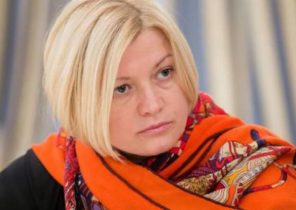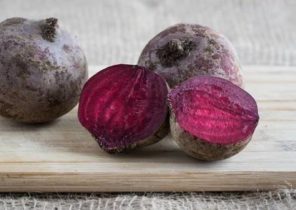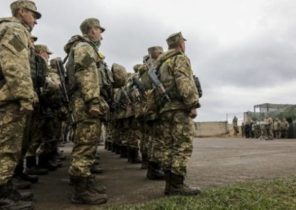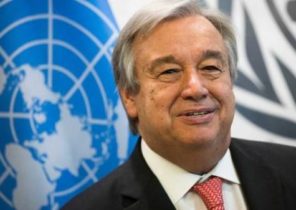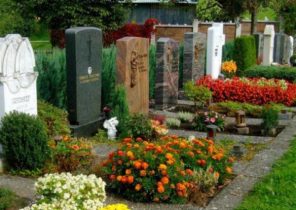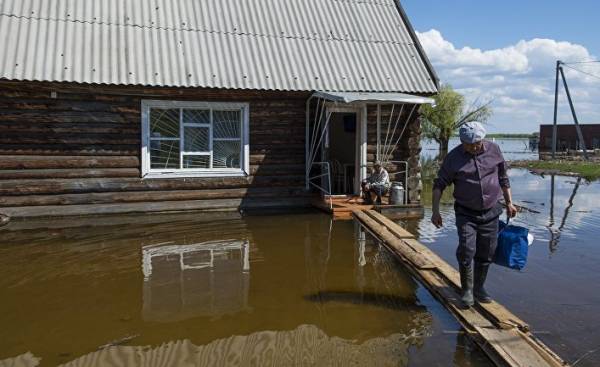
The village of Zharki, Russia — Antonina Nikolaeva considers that the village does not need any public school, nor even a shop.
“There were some old people. What do the elderly do? To die,” says the burly, gray-eyed 75-year-old widow, standing in the doorway of its unpainted log houses.
The house was built a few years before the birth of Antonina, when in this village in the Pskov region, located 600 kilometers West from Moscow, settled dozens of farmers.
Today there’s only eight people: Frying belong to the number dying Russian villages. It is a bitter reality, which has become widespread in Russia. While President Vladimir Putin in Syria and Ukraine shows military and political power of the Kremlin, of his own village, for centuries formed the basis of Russian national identity, culture and demography, dies slowly but steadily.
Although the outflow of population from rural areas due to urban growth and industrial development characteristic of many countries, ranging from China to Canada, the situation in Russia looks especially depressing. According to the latest national population census of 2010, almost 36 thousand villages — or one in four — consists of ten people or less. Another 20 thousand are abandoned.
Today live in the countryside, less than a quarter of Russians. When compared with the data of a single census the king’s time spent in 1897, is three times less than 120 years ago.
Place unforgiving
Nowhere in Russia the situation is not going so bad as in the Pskov region, which is on the threshold of the European Union, on the border with Latvia and Estonia. Because of the rough terrain with numerous lakes and marshes around scraps of arable land was traditionally a small size of the village.
As reported in September, the radio “Echo of Moscow” Lev Shlosberg, a Pskov politician from the opposition party Yabloko, to date from 13 thousand villages three thousand are in a derelict state, but five thousand has more than ten dozen people each.
Uncultivated land and young forest on all sides come close to dying or already dead villages, while winter frosts, rain and fire deal with abandoned huts. Frying are mainly composed of such log houses: they stretch along the main street, still bears the name of Communist ideologue Karl Marx, and are blinded, with Windows without glass, the boarded-up wooden boards and slate.
The nearest shop is two miles away. It is amazing a lot of alcohol, though the best bread is sold. With lush crispy snow that fell in Żarki in mid-January, covered ruts of the road became little more than passable, and the village three times a week. “autobench”, a truck with inexpensive products.
“It stops right at my window. There you can buy whatever you want,” says Antonina Nikolaev.
Her nearest neighbor is blind and almost deaf 91-year-old woman barely able to keep the fire in the huge furnace, heat in winter which saves her from death.
Only one family in Żarki has a child, six-month-old baby, and the most highly paid work in the district — on a potato farm where you can get 500 rubles ($8) a day and a bucket of potatoes.
With the abolition of rigid rules of registration adopted in the Soviet era, Pskov youth can freely move to the big city. Daughter Nikolaeva lives in Porkhov, a town 13 kilometers from her native village, and his son — in Saint-Petersburg, the second largest Russian city, at a distance of 250 kilometers.
Due to the outflow of youth fertility rates in the Pskov region — the lowest in Russia: according to government statistics, in 10 newborns in the cities accounts for 14 deaths, while in rural areas — 27.
Although the population of Russia (143 million) in recent years shows a slight increase, the region with a population of 646 thousand people since the collapse of the Soviet Union in 1991 has lost almost 200 thousand inhabitants.
In 2009, the number of abortions in the Pskov region almost coincided with the number of children born. Regional officer of health Tatyana Shirshov, reportedly called it “a reason for hope and optimism” — before abortion was even more.
The Ridge Of Russia
The Russian word “village” comes from the word “tree”.
For many centuries the Russians cut the vast birch and pine forests to build houses and to clear land for fields and pastures. Crop failures, famine, forest fires and war, plundered and destroyed their villages, but these losses were offset by high fertility rates.
Overpopulated and eking a miserable existence for the village of Czarist Russia the world’s largest exporter of wheat and served, as it seemed, an endless source of labor and recruits, as well as nostalgic inspiration for European aristocrats and artists.
However, the revolutionaries perceived the village otherwise.
“There’s nothing but the yoke of endless poverty, chaos and stagnation,” wrote the founder of USSR Vladimir Lenin in 1910, seven years before the Bolshevik revolution overthrew the Tsar and beckoned for a disenfranchised residents of the village with the promise of free land and a utopian equality.
But the Stalinist collectivization and the purge among the rich peasants did Soviet agriculture disastrously ineffective. The USSR imported grain from North America, while a sharp drop in the birth rate and a constant outflow of youth from rural to city contributed to the reduction and aging of the population of the provinces.
The collapse of the USSR in 1991 put an end to state-sponsored collective farms, while a recent “optimization” of rural administration has sharply reduced the number of rural hospitals and schools.
Even the revival of the Russian agricultural sector could not stop the Exodus of people from rural areas. Last year Russia became the world’s largest exporter of wheat, as well as being a major producer of buckwheat, sunflower oil, sugar beet and oilseed rape.
However, this boom is a reflection of the transition to industrial agriculture, which is heavily mechanized and requires far less labor than traditional production cycle that kept the Russian village.
“The country has no future, because agriculture does not require large amount of human resources,” said Aljazeera Anatoly Vishnevsky, Director of the Institute of demography at the Higher school of Economics in Moscow.
While the village is forced to deal with the myriad problems, many people are quite happy with their lives — and the political agenda of the Kremlin.
“We have everything, nothing to worry about,” says Antonina Nikolaev, sitting knitting in her house consisting of three rooms. Just started on TV her favorite Russian series, and cheerful music drowns out the squawking coming from the coop immediately.
She had never traveled outside the former Soviet Union, and she has no access to Internet or some other sources of information that would be contrary to the Pro-Kremlin media. Besides, Antonina, an ardent defender of Putin.
“He cares about the Russian people, everyone helps,” she says, proudly adding that in January, will receive a five-thousandth supplementary pension, which is just over one hundred dollars. This lump sum payment was replaced with an adjustment for inflation, which the Kremlin can no longer stand because of the continuing economic crisis caused by low oil prices and Western sanctions after the annexation of Crimea in 2014.
Politically the villagers make “traditionalist and very inert at the heart of the majority of Russian regions,” writes geographer and sociologist Natalia Zubarevich in the book of essays 2015 “Putin’s Russia: how it originated, and how it may end.”
“Periphery apolitical and always vote for the current government,” she notes.
Provincial anti-Americanism?
Due to the widespread propaganda of the Pro-Kremlin media, some residents also believe that their troubles are the fault of the Americans because they supposedly were responsible for the collapse of the Soviet Union and collective farms, and now you’re trying to strangle Russia with sanctions.
“[President Barack] Obama wanted us died of starvation,” says Ivan Pavlov, 84-the summer pensioner who even at home wearing boots traditional shoes made of matted wool and warm vest, and speaks with a strong local accent.
“But we survived and we feed half the world,” he says, referring to record levels of wheat exports, which the Russian media portrayed as another triumph of Putin’s rule.
A small TV and a weekly tabloid are the only sources of information for Pavlov and his wife Anna — the last residents of the village of Sajino, located 20 kilometers East of Zharkov.
Anna looks at the future of the Pskov villages with much less optimistic than her husband.
“Coffin lid — that’s all the help,” says 89-year-old woman.

